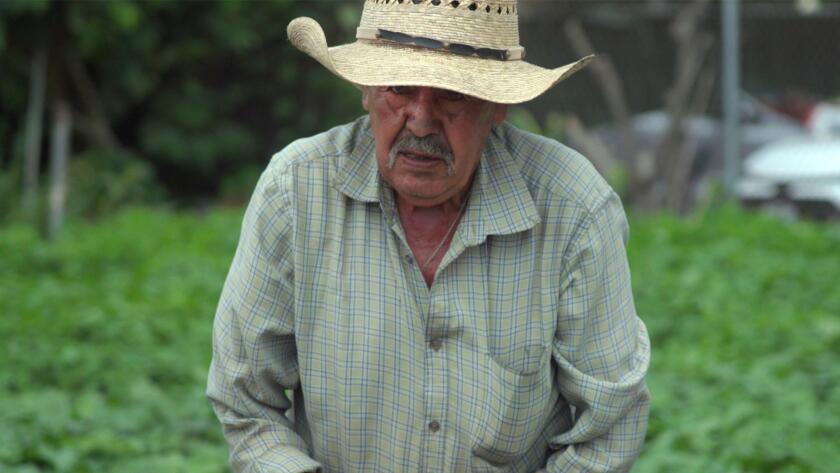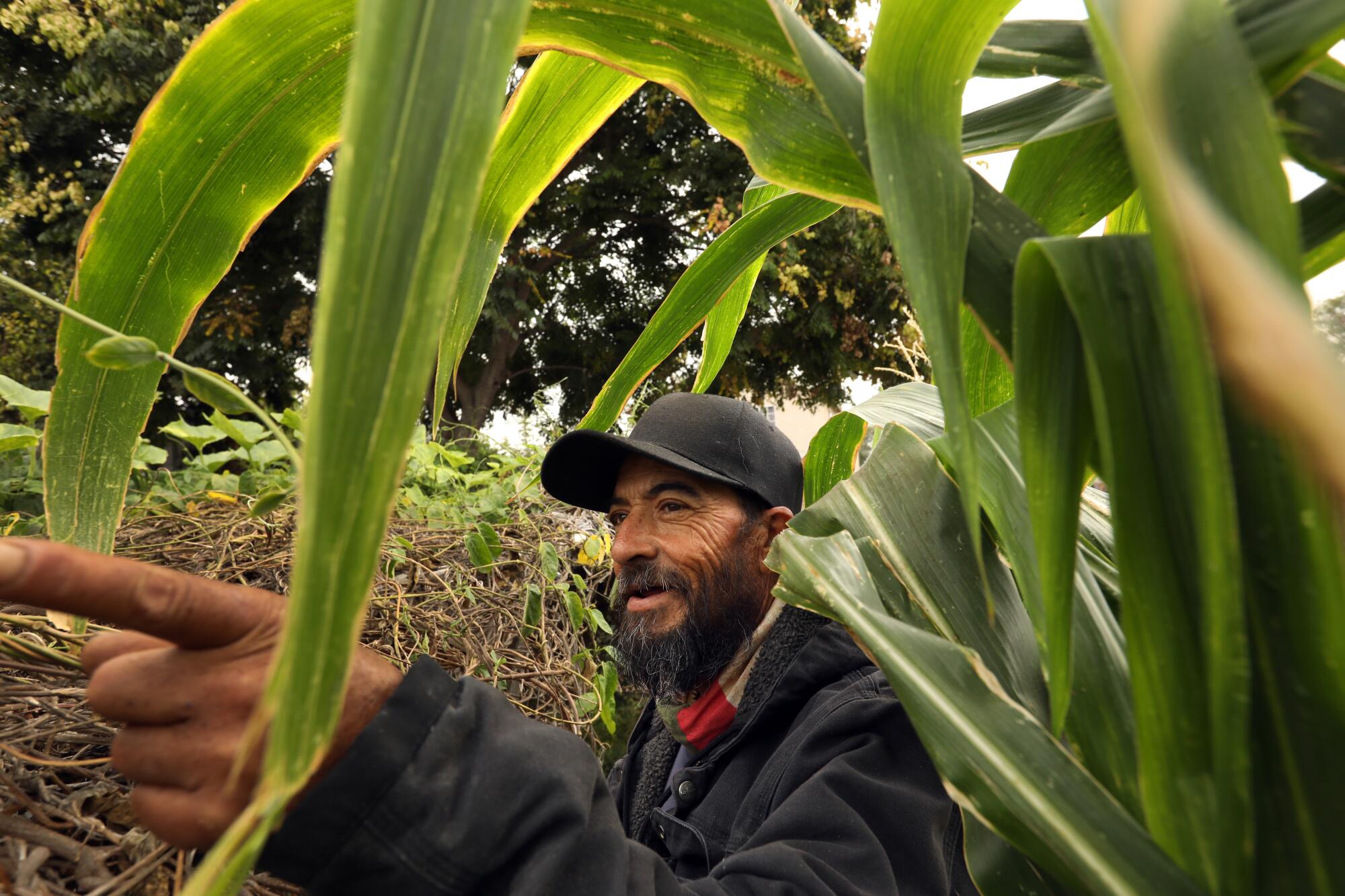
- Share via
Conrado Esquivel calls his papaya tree “El tigre” for the legs sprouting from its base.
The pomegranates he grows are red or green, some bitter, some sweet.
On a recent afternoon, the chiles were just about ready to harvest, as was the berro, or watercress.
He has named this plot in Watts “Rancho el lorocito,” after the white flower that sprouted abundantly from a tree above his head as he sat in his usual spot, watching over the crops of four other gardeners.
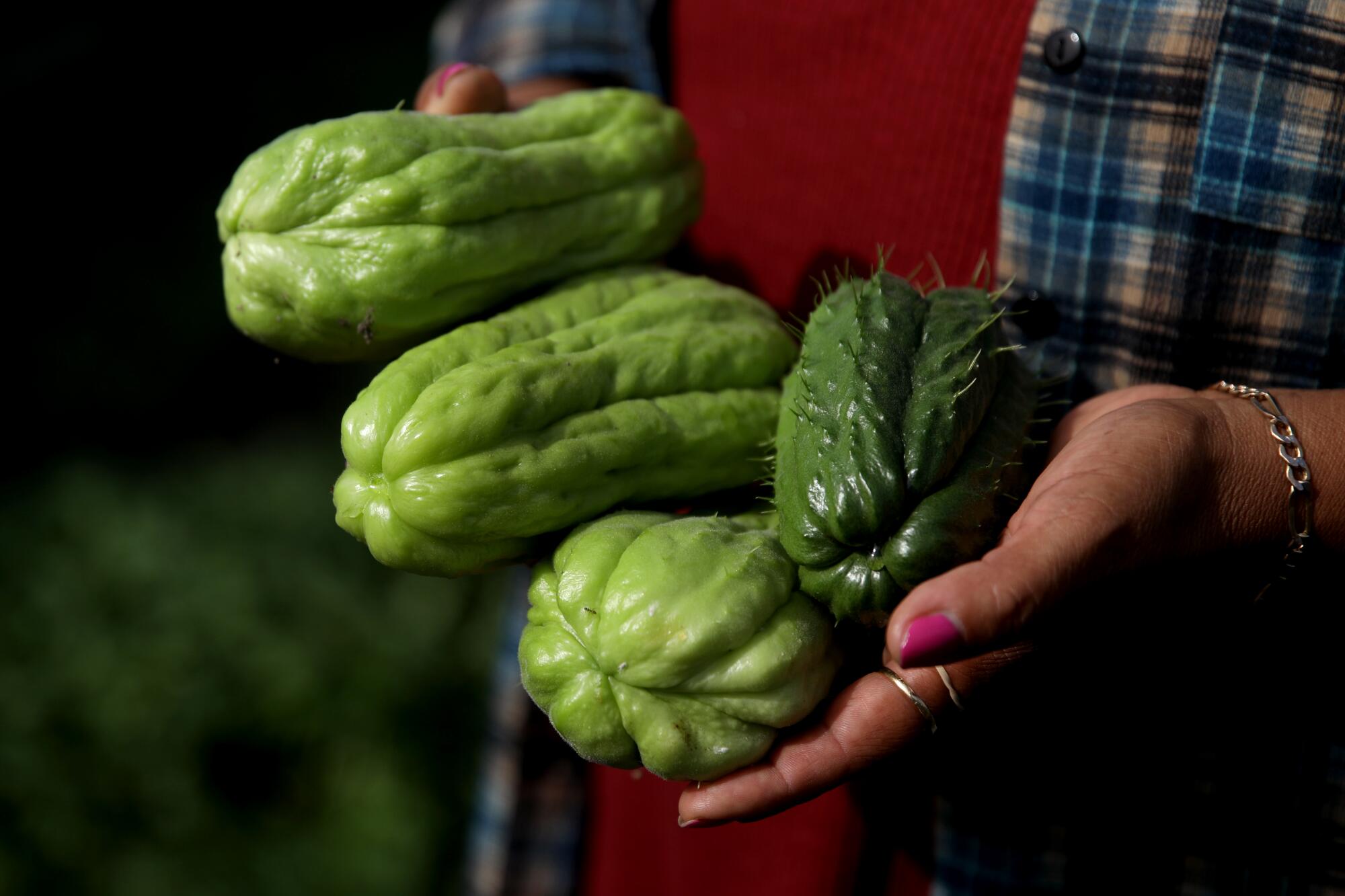
Where Esquivel grew up, in Michoacán, Mexico, he didn’t eat loroco, but here he learned to cultivate it for the Salvadorans who stuff it in pupusas and other dishes.
That is the nature of this community garden, its more than 200 plots tilled by immigrants from all over Mexico and Central America. They have planted foods from their hometowns — the leafy greens papalo and chipilin, the herb hierba mora — sharing them with each other until one person’s traditions become everyone’s.
Many of the gardeners labored for decades on construction sites or in factories but never achieved the American dream of a house with a yard.
- Share via
A few miles from the intersection of the 110 and 105 freeways, a group of around 200 people grow food, mainly for neighbors and their own kitchens. This community of farmers found a connection with their home countries, growing traditional ingredients for Mexican and Central American cuisines under the power lines.
They come to this 11-block strip of land, framed by electricity towers at 109th Street, west of the Nickerson Gardens housing development, to feel the soil between their fingers, to watch the plants grow, to marvel at the orange butterflies, to remind themselves of home.
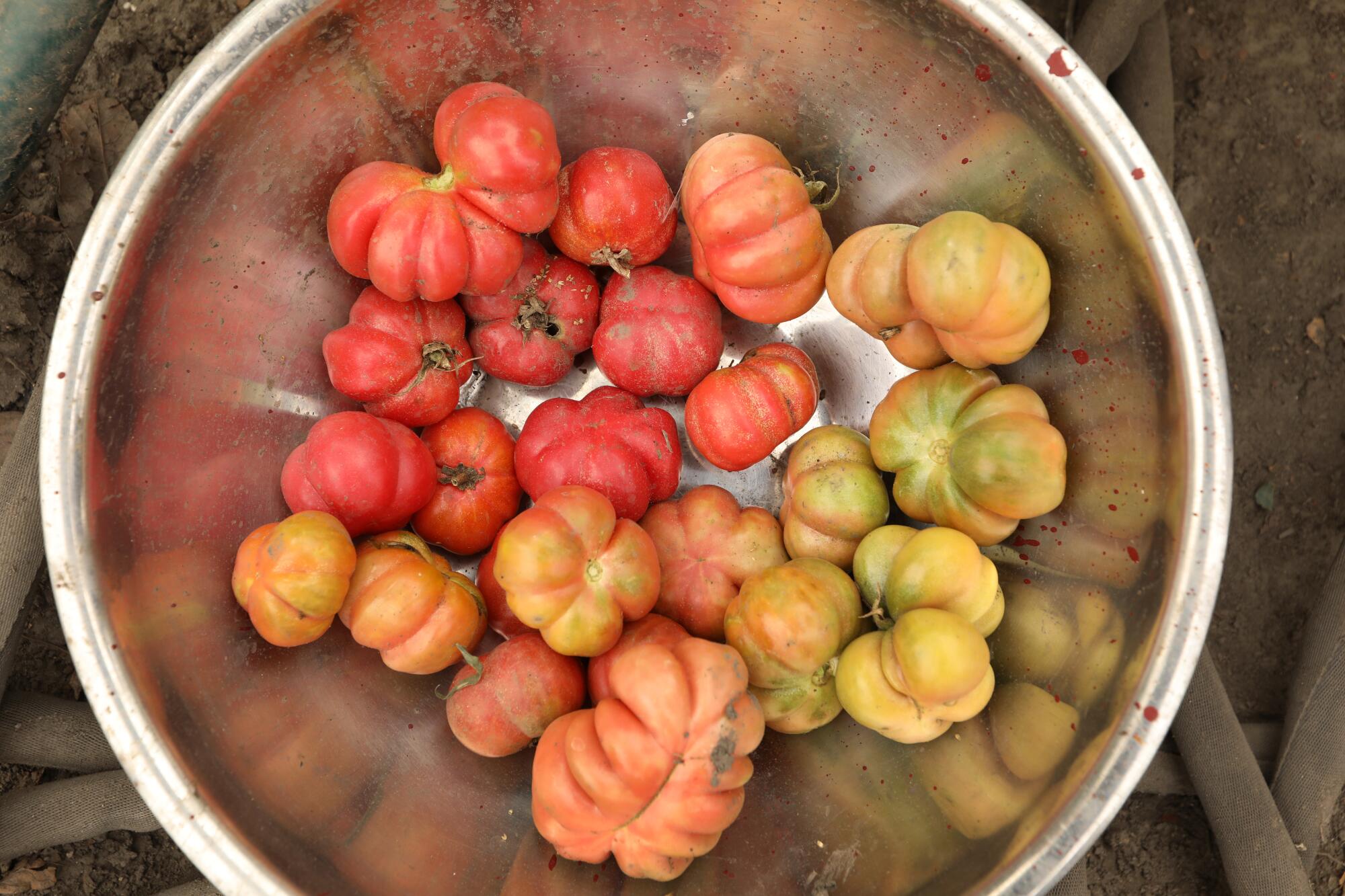
Esquivel, 59, has occupied his section of the garden for so long that he’s regarded as a leader, extending a warm hospitality to strangers.
“Go ahead and take one — with confidence!” he said, offering a visitor a guava from a nearby tree.
He farmed onion fields with his family in Michoacán before coming to the U.S. as a teenager in the 1980s, working in a refinery.
In 15 years nurturing plants here, he came almost daily from his home in Maywood but is hampered now by vertigo from diabetes.
“Here, you can relax,” he said. “You forget about a lot of things. If I couldn’t return home to sleep, I’d sleep here. I’d live here, at the foot of what I sow.”
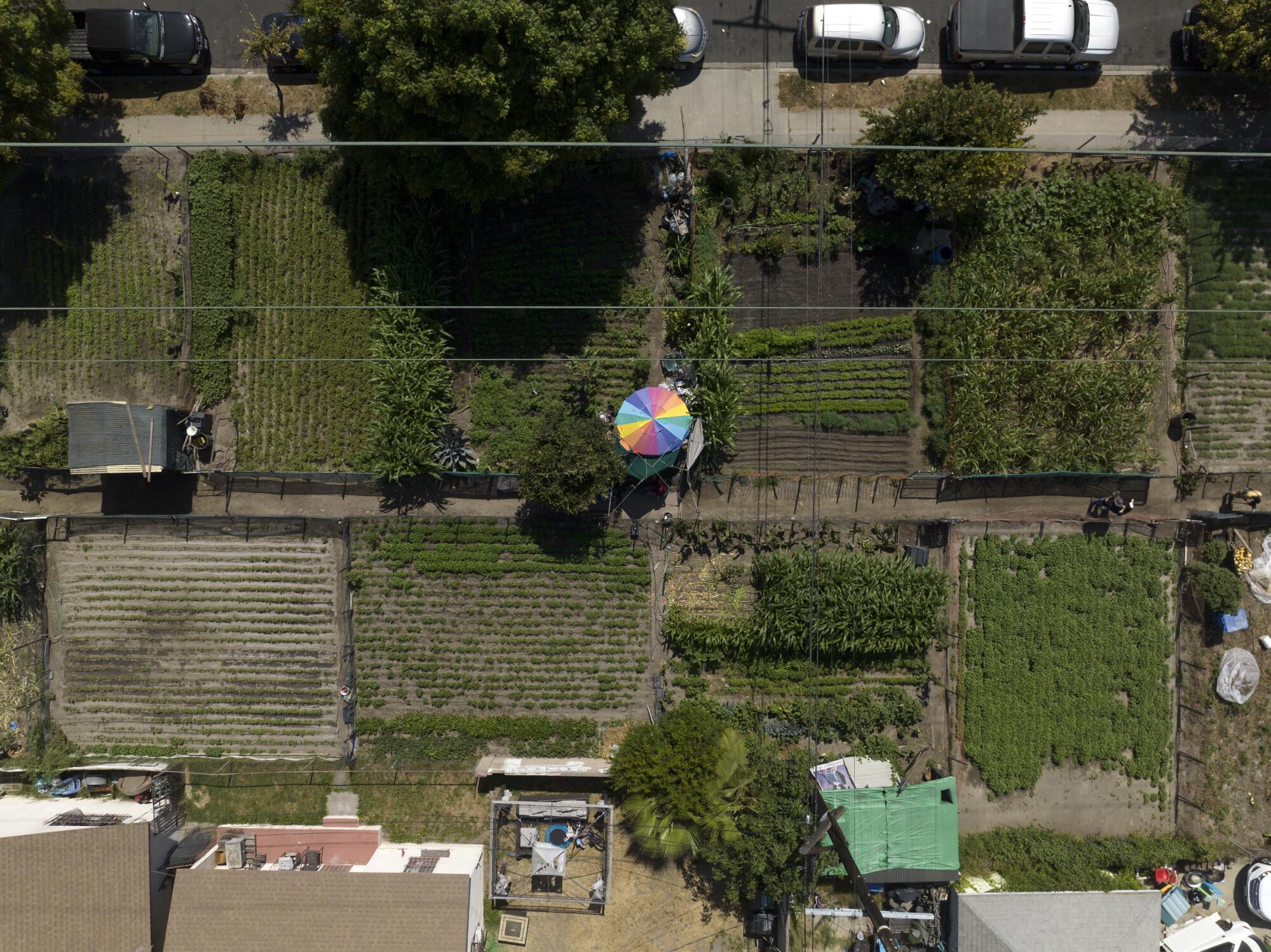
For some, it was a stretch to come up with the $30 a month to rent a plot, which included water and other costs. Now, with the statewide drought, they are paying more — $40 a month, negotiated down from the $50 proposed by the Los Angeles Community Garden Council, which governs gardens in the city.
The garden, known as the Stanford Avalon Community Garden, used to be on 41st Street until Ralph Horowitz, the developer who owned the land, took it back in 2006.
The gardeners managed to raise $16 million in an effort to buy the land. Horowitz declined. Some gardeners branched off into a different collective while others found support from local politicians who helped them find a new strip of land in Watts. The fight was documented in an Oscar-nominated film, “The Garden.”
Most community gardens in L.A. are “hobby gardens” for more affluent demographics, said Pierrette Hondagneu-Sotelo, a USC researcher who has written a book about California gardens. This one is “healing spot, homeland and economic generator” for a diverse group of immigrants — Indigenous, mestizo, Central American, she said.
On many plots, the gardeners have erected awnings or “casitas” where they enjoy the scenery and share a meal with neighbors. Some are equipped with a barbecue, electric stove and storage areas.
“Those little casitas, each one is slightly different,” Hondagneu-Sotelo said. “You see guys sitting back there on a little humble bench, talking, gossiping, checking in with one another.”
Ana Bustamante and her husband, Luis Bustamante, secured a plot last summer. Starting a new garden has been difficult with watering limited to three days a week during the drought. What they hoped would be a corn crop had manifested only a few small sprouts.
Her husband walked between the rows, spraying a liquid fertilizer.
“Por eso no nos salió nada. Por el agua,” Ana Bustamante said. That’s why nothing has grown. Because of the water.
One plant, hardy as a weed, was flourishing — hierba mora.
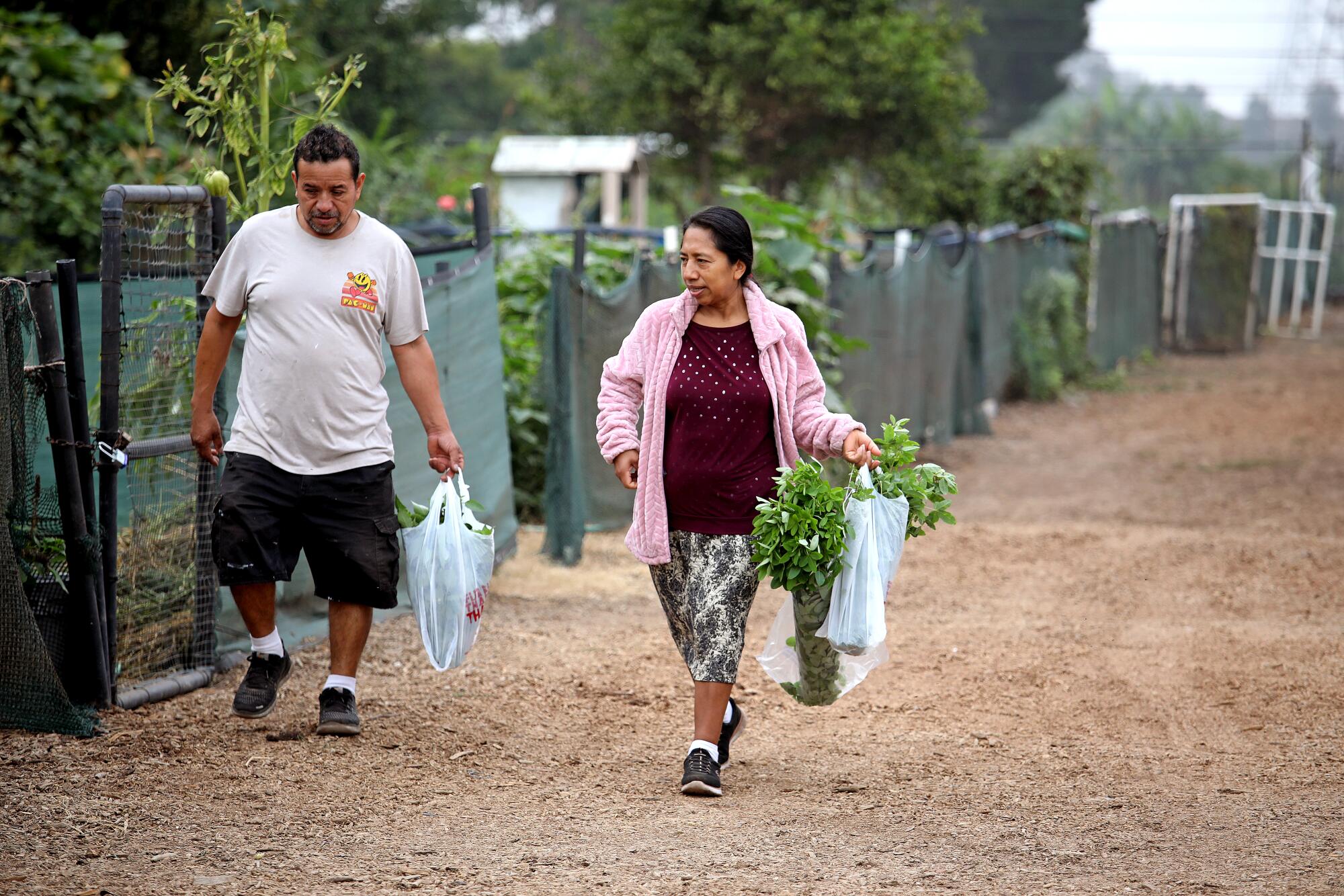
Bustamante’s father, on his morning rounds milking cows and tending to his land in El Salvador, would tear pieces of the greens for her to eat in the mornings before school.
“It grows naturally as long as you water it. It has good vitamins, it gives you energy,” she said. “My father would say, ‘Here, so you don’t feel tired.’”
Her house in Compton is surrounded by asphalt, with a green strip on the sidewalk too small for gardening. With the community garden plot, she can grow vegetables for her family and nine bunnies.
At 71, she has been widowed twice. She is on disability leave after a piece of wood fell on her at her warehouse job, damaging her back.
“If one has problems from what has happened in the past, you come here to relax,” she said.
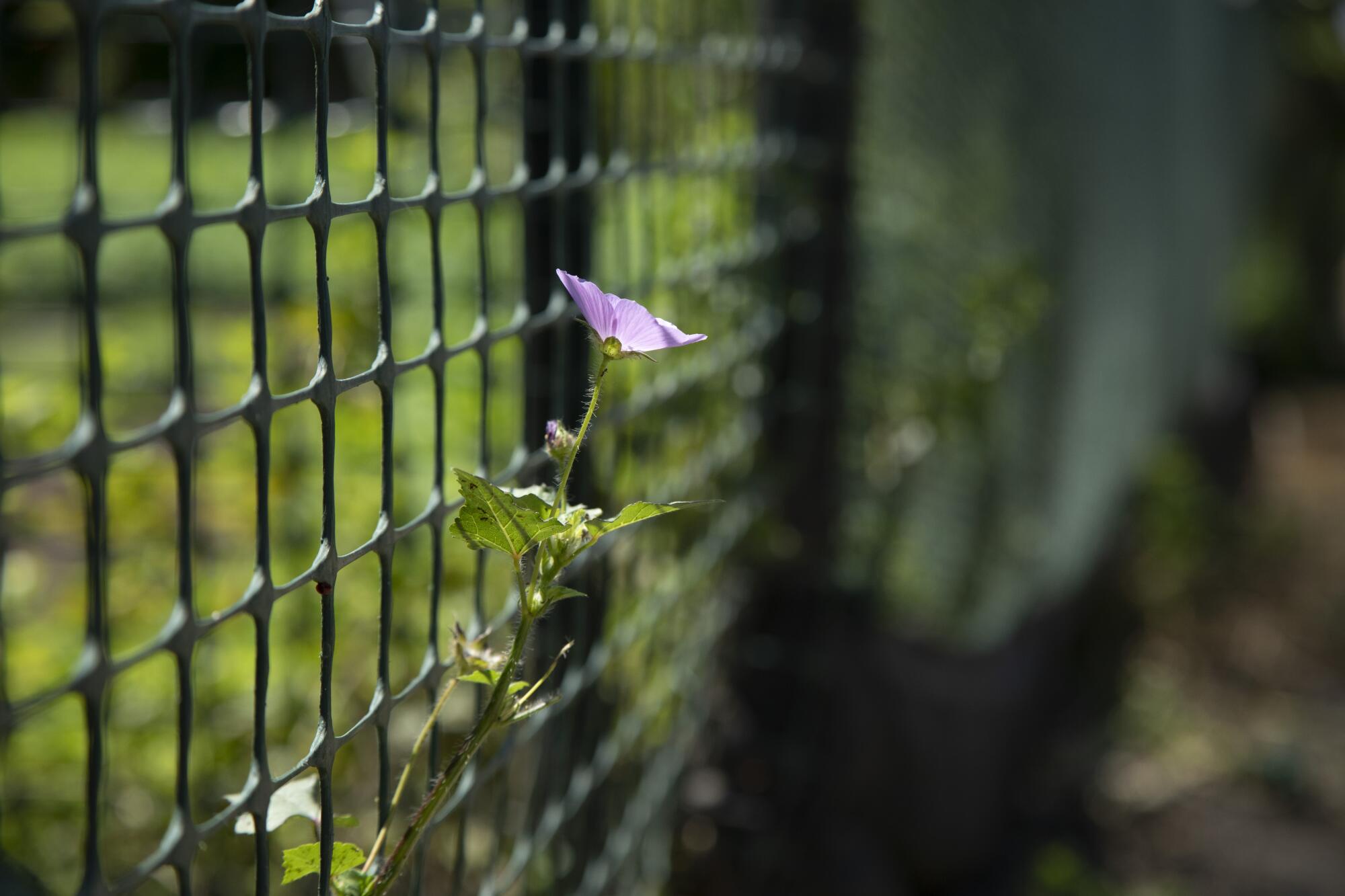
Near the edge of the garden, Maria Gonzalez, 59, picked leaves from a tree, cleaning off the dust with her hands. She handed them to a friend to help with his high blood pressure. Brew them in a tea, she instructed.
Gonzalez makes $80 a day keeping up the plots of gardeners who can’t come often enough. She sows seeds, yanks weeds and watches the vegetation grow.
Sometimes, she hops on her bike to work at a nearby party supply store, though she thinks there will be layoffs soon.
She lives here at the garden, usually sitting outside to escape the confines of the van that is her home.
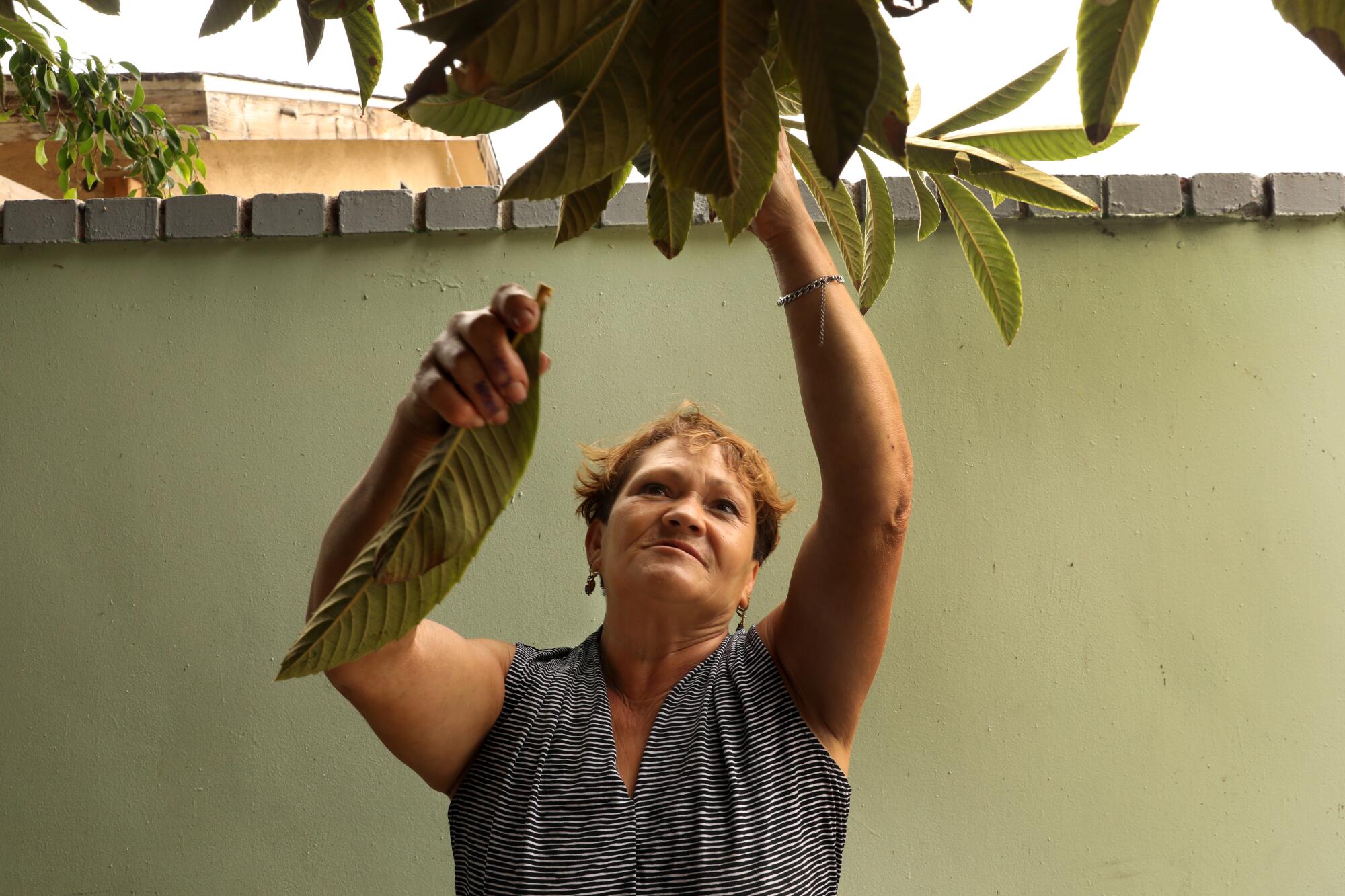
She has been in the U.S. since she was 14 but has never quite gotten used to the grind, especially now that inflation is devouring her meager earnings. Her children are grown and have their own families, mostly in suburbs outside of the city.
She reminisces about her childhood in Mexico, when she ran through green fields, chasing butterflies and capturing them. She and the other children would — and she winces at this now — press the butterflies into books so they could admire the beautiful colors.
The butterflies in the garden remind her of home.
“I like being here, maybe because I feel closer to Mexico,” she said. “I feel free.”
On the weekends, locals visit the garden, looking to buy plants and herbs that can’t be found at the supermarket.
Olivia Cruz Garcia said a family friend told her about the fresh, organic produce that could be purchased at a low price.
She told Esquivel she was looking for nopales. He didn’t have any, but he sent her home with bundles of papalo, a pungent plant that settles the stomach; hierba buena, a minty healing herb; and flor de calabaza, the flower that blooms from zucchini.
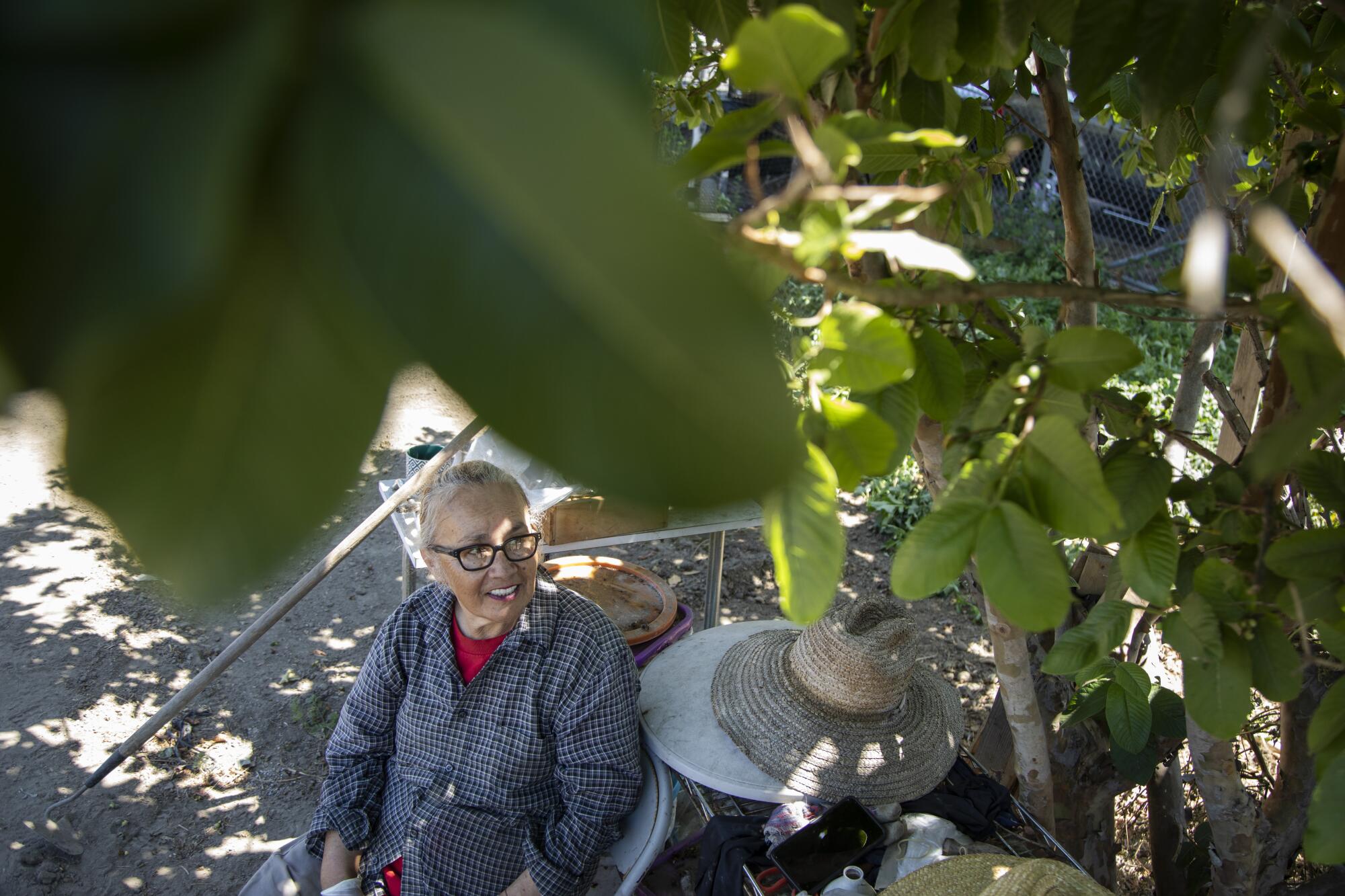
“You’re missing the epazote,” he told them as the couple walked away, retreating to his garden to fetch some of the flavorful herb, often used in Mexican dishes such as quesadillas or esquites. Moments later, he handed them the bundle.
“How much?” Cruz Garcia asked.
“Nothing,” he said, waving them off.
Garcia’s husband, Juan Espinoza Trujano recounted the recipe from his hometown pueblo that he planned to make: quesadillas with epazote, flor de calabaza, onion and chile.
Husband and wife, both 60, have had their hours reduced at their clothing factory jobs, and paying bills and rent has been difficult. Groceries have gotten expensive. They were relieved to discover the garden.
Esquivel said he always gives some of his produce away for free. The karma will come back in the greenness and lushness of the next crop, he believes.
“If you want to buy, go to El Super,” he said, referencing the supermarket chain. “Friendship is better than money.”
More to Read
Sign up for Essential California
The most important California stories and recommendations in your inbox every morning.
You may occasionally receive promotional content from the Los Angeles Times.
